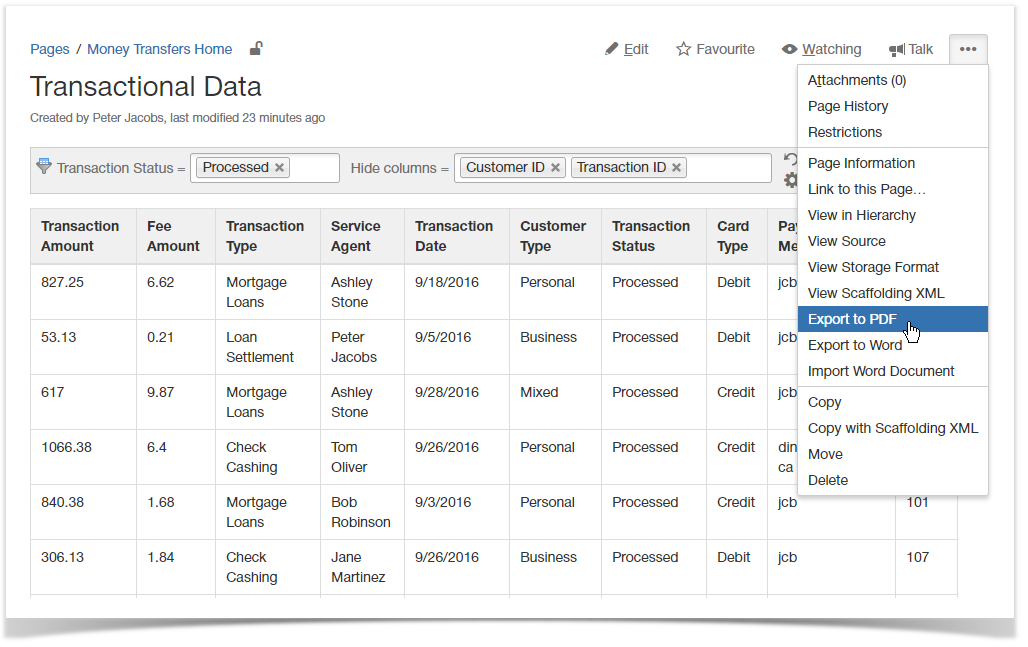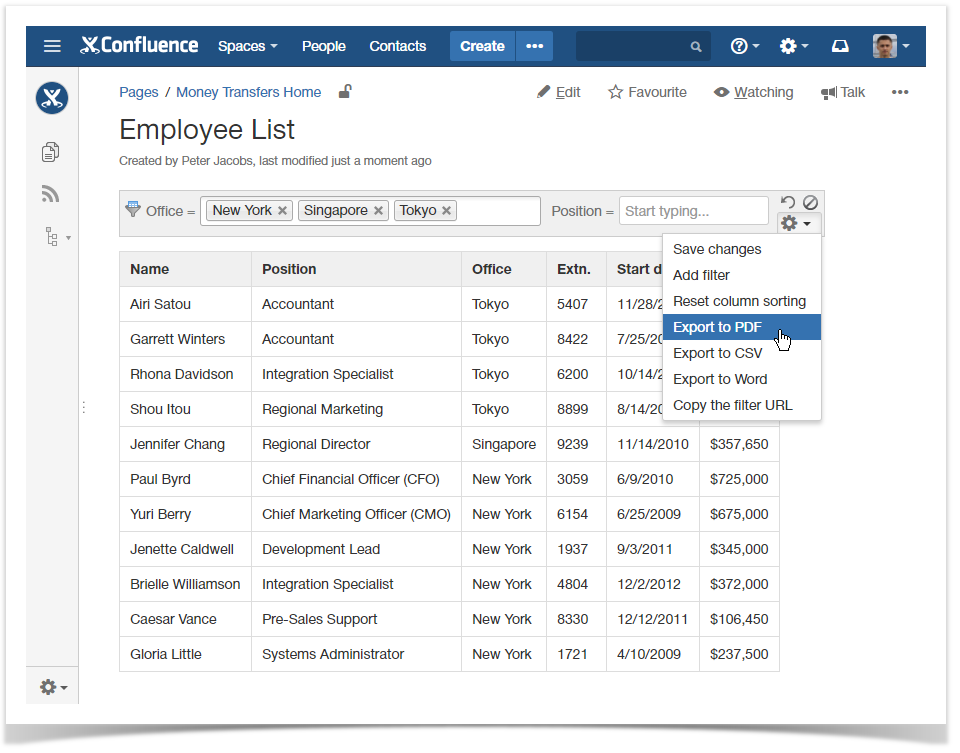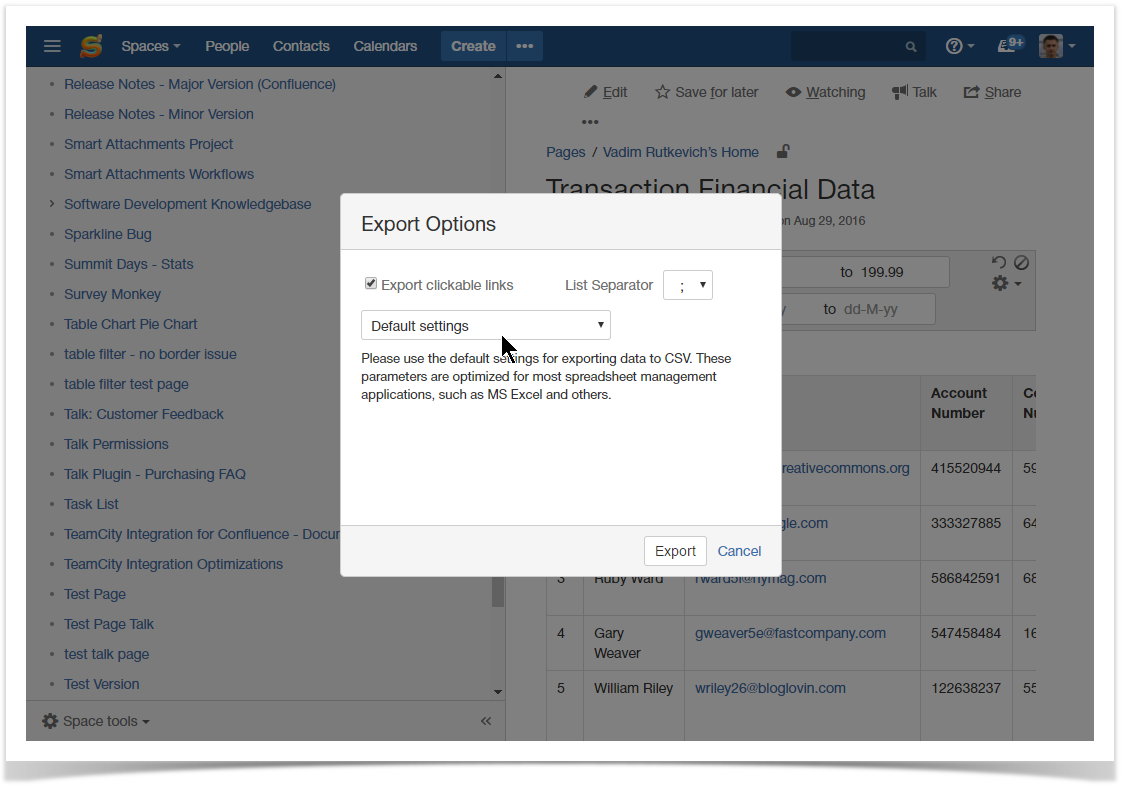Table Filter and Charts for Confluence add-on allows you to export your filtered and pivot tables to PDF and Word documents in their current view. You can also export your data visualizations as charts or graphs too.
In addition, the add-on allows you to export filtered data to CSV (comma delimited values).
Exporting Page, Page Tree or the Whole Space with Filtered Data/Pivot Tables/Charts
- Apply the required filters to your data table or configure the pivot table or charts.
- Chose any export option.
- All the information from the page will be exported.
The app supports space and page tree export from the version 4.4.x. If macros were created in the version of the app 4.3.x or older version you need to view every page containing macros before the first export (i.e. once) to prepare it for export.
Exporting Filtered Data/Pivot Tables/Charts to Word and PDF
The way of exporting filtered table data, pivot tables or charts is similar in all the macros bundled within Table Filter and Charts add-on.
- Open the page with filtered table data, a pivot table or a chart.
- On the filtration or management pane, locate the cogwheel icon and click it.
- Click Export to PDF or Export to Word.
- Save the file to your local computer for opening.
Exporting Filtered Data to CSV
Starting from Table Filter and Charts 3.8.0, you can export filtered data to CSV files. Since 3.9.6 exports data in UTF-16LE format which improves compatibility with major spreadsheet management applications.
The add-on allows you to export data to CSV, as follows:
- default settings
- custom settings
The default CSV format uses the following parameters:
- Encoding: UTF-16LE.
- Unicode BOM: BOM \uFFFE
- Separator: Tab.
- Quote Character: Double Quotes.
To export filtered data to CSV (with default settings):
- Open the page with the table.
- Apply the necessary filters.
- On the filtration pane, click the cogwheel icon.
- Select Export to CSV.
- In the Export Options form, select Default settings.
- Click Export.
- Save the file to your local computer for opening.
To export hyperlinks as clickable links to CSV:
- Select the Export clickable links option.
- Define the appropriate list separator according to the local parameters on your machine.
To export filtered data to CSV (with custom settings):
- Open the page with the table.
- Apply the necessary filters.
- On the filtration pane, click the cogwheel icon.
- Select Export to CSV.
- In the Export Options form, select Custom settings.
- Define the following parameters:
- Delimiter character - specify the character to delimit table columns.
- Quote character - specify the character to delimit separate call values.
- Export table header - update or delete the table header in the CSV file before export.
- Click Export.
- Save the file to your local computer for opening.



